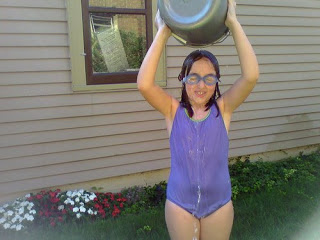
‘Carry a water bottle with you everywhere,’ is the answer I most commonly hear when I ask young adult cancer patients for practical tips on how to get through chemo. I don’t want to instigate enviro-paranoia, but I do want to talk about solutions to recent news that the chemical in hard, plastic water bottles can interfere with the effectiveness of your chemo.
Tara Parker-Pope, healthcare blogger for the New York Times, recently wrote the post Plastic Chemical May Interfere with Chemotherapy. Here’s the gist: Bisphenol-a, (a.k.a. BPA) is the chemical used to make polycarbonate, the ultra-durable plastic used in hard, clear water bottles. (Not the soft plastic drinking bottles like an Evian bottle – which has also come under scrutiny, but the hard plastic bottles like a Nalgene bottle.) A group of University of Cincinnati scientists recently tested on human breast cancer cells moderate amounts of BPA typical to the levels found in the average human’s bloodstream. They discovered that a protein was induced that protected the human breast cancer cells from being destroyed by chemotherapy, much the way that estrogen does. In effect, BPA can reduce the effectiveness of chemotherapy.
While this news might reek of quacko-conspiracy, this study was not funded by a bunch of crunchy hippies in Berkeley. It was funded by Susan G. Komen, the National Institute of Health, and the Department of Defense (lots of breast cancer funding comes from DOD, but that is a whole different post.) The FDA is even reviewing the safety of BPA and is getting their hands slapped by their own science panel in the process.
Instead of freaking out about the chemo and hydration situation, I asked blogger Catherine Perry (whatthehellcanieat.wordpress.com) for some practical solutions. She recommends drinking from unlined, BPA free stainless steel water bottles. “Make sure your stainless steel bottle doesn’t have a plastic liner inside, which may leach BPA. Also, canned foods have been shown to be the predominant source of our exposure to BPA (from plastic lining inside). So along with switching bottle types, try to eat more fresh foods and use ceramic, glass, or unlined metal containers for storing and heating food.”
If my best friend Jana, an enviro-queen from Seattle, and Stuff White People Like, are predictors of encroaching trends, I think we’ll start seeing stainless steel water bottles popping up everywhere. Most importantly, make sure you’ve got one next to your chemo chair.
Do you chug water? What kind of container do you use? Do reports like this make you want to change your containers, or do you not respond to this kind of info until the FDA releases a product warning?
![]()
![]()
 “Everything Changes is, without doubt, the most forthright, emotionally sophisticated, and plain-old valuable book of its kind I've seen.”
“Everything Changes is, without doubt, the most forthright, emotionally sophisticated, and plain-old valuable book of its kind I've seen.”












